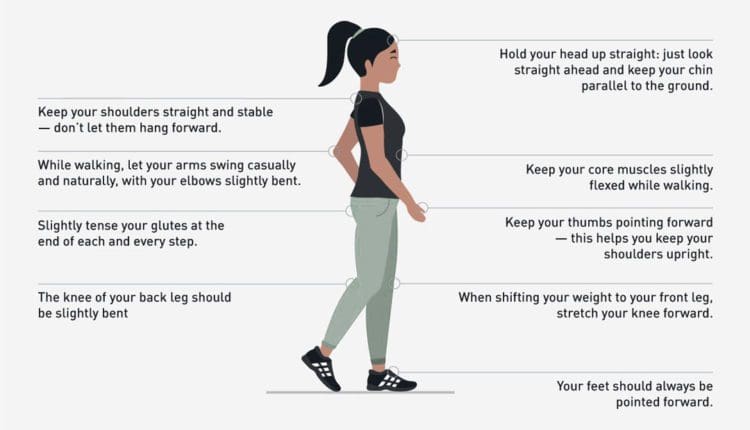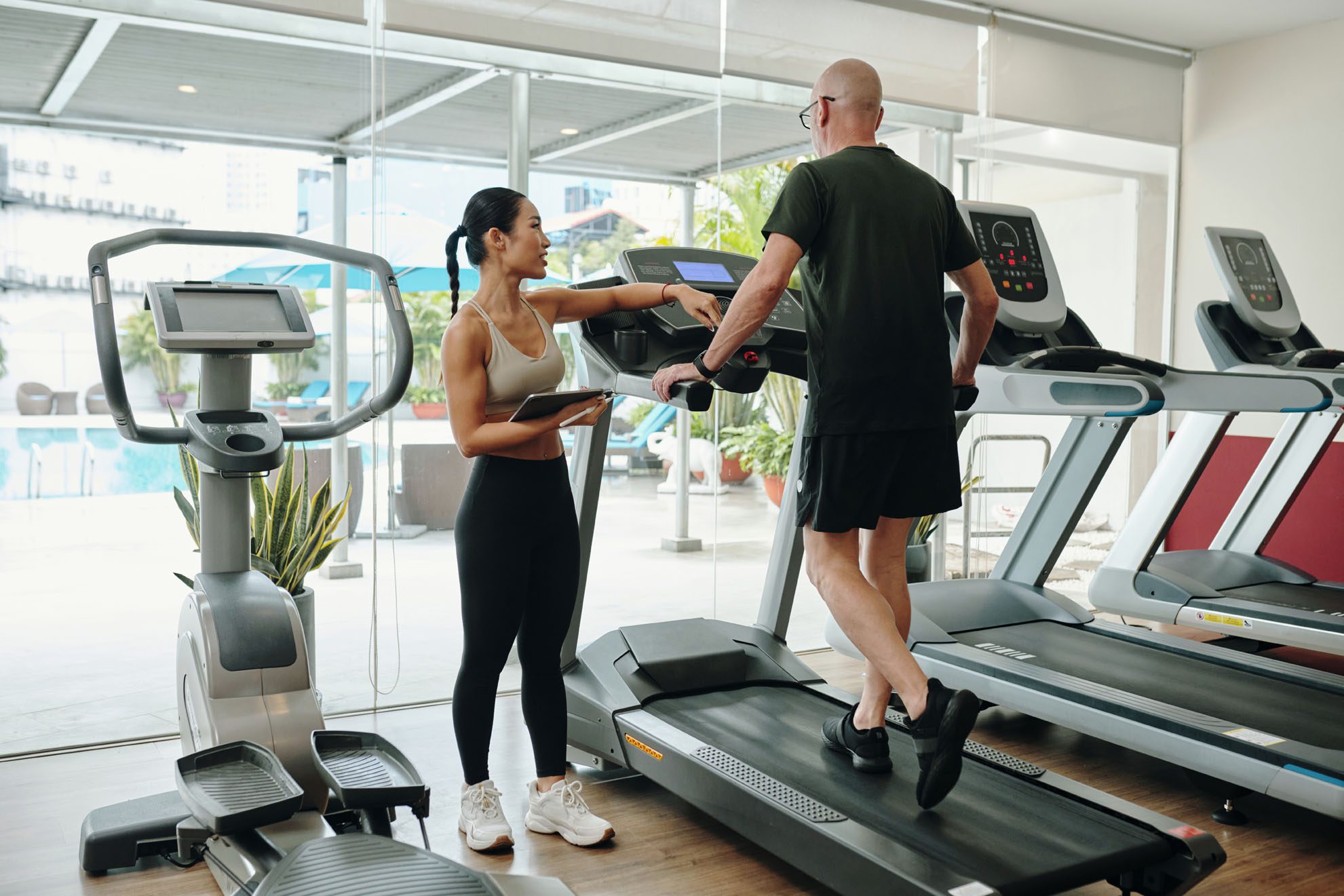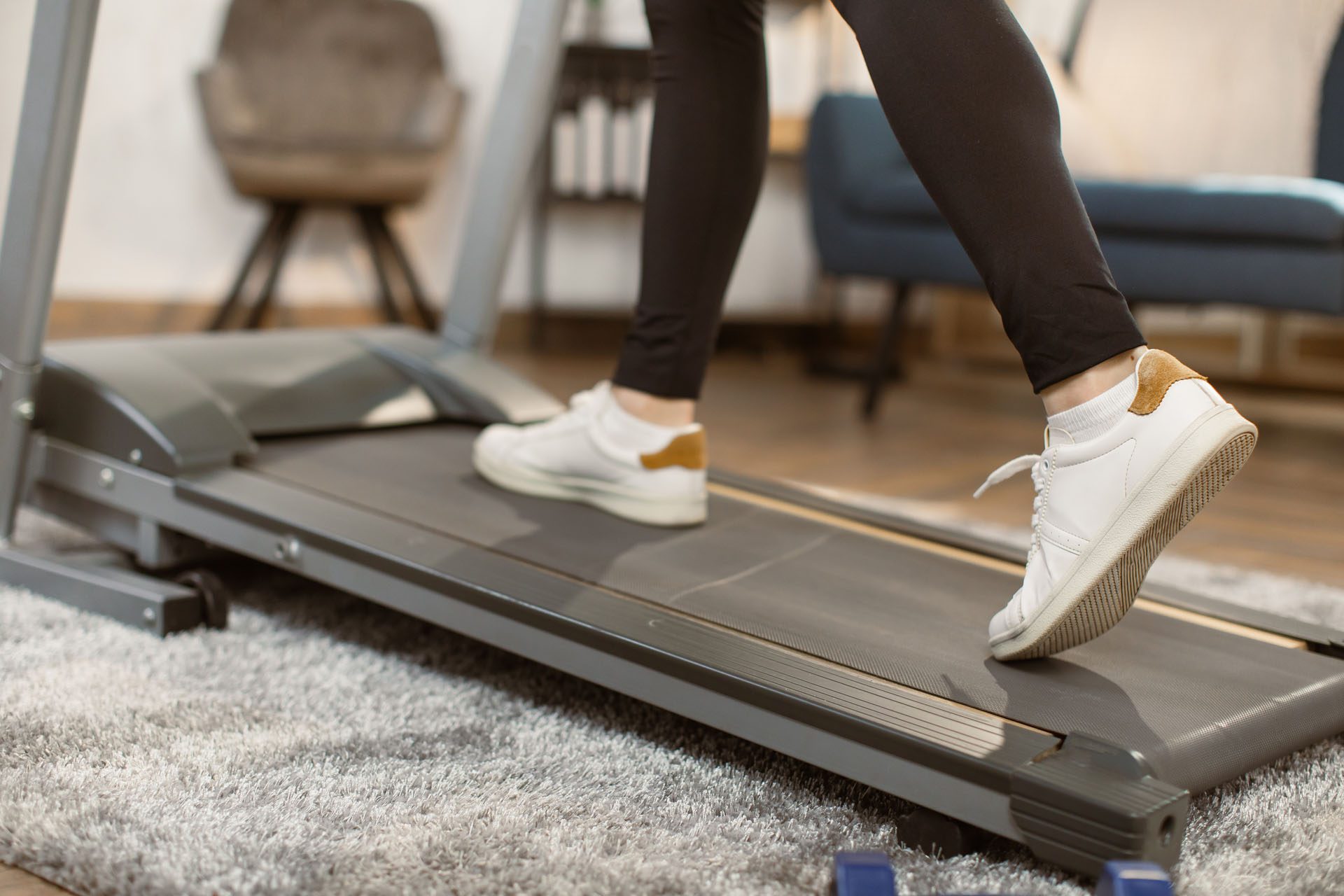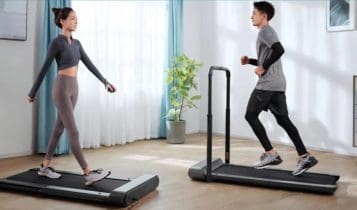Walking Backward to Alleviate Back Pain
Can walking backward on a treadmill aid in treating conditions and injuries, improving strength, gait, and mobility in the lower extremities and knee, hip, and ankle range of motion (ROM)?

Walking Backward On A Treadmill
Walking backward is often used in physical therapy to treat multiple conditions and injuries and help improve strength, gait, balance, and mobility in the lower extremities. It is also used to improve knee, hip, and ankle range of motion and lower back pain and burn calories.
The Difference Backward vs. Forward
The difference from forward walking is that certain motions are normal gait characteristics.
- First, the leg swings through the air, and the heel lands on the ground.
- Then, the straight knee bends slightly as you roll from heel to toe.
- As this occurs, the opposite leg rolls from the toes and up into the air.
- This heel-to-toe motion repeats, and normal walking takes place.
Reverse walking creates the opposite gait process.
- The leg swings through the air and reaches backward with a bent knee.
- The toes contact the ground, and the bent knee straightens as you roll from toe to heel.
- Then, the heel leaves the ground with the knee straight, repeating the process.
- The toe-to-heel gait can provide various benefits. (Cha H. G., Kim T. H., & Kim M. K. 2016)
Benefits
Walking backward on a treadmill benefits include:
- Improved range of motion in the knee
- Hamstring flexibility and mobility
- Quadriceps strengthening
Walking backward also helps burn calories, improve heart function, and improve balance and stability. (Cha H. G., Kim T. H., & Kim M. K. 2016)
Knee Range of Motion
- Reverse walking can help increase knee extension range of motion. (Zhang M. et al., 2022)
- Individuals with knee injuries, surgeries, or arthritis may lose their knee extension or the knee’s ability to straighten.
- The bent knee straightens fully when walking backward, moving from the toes onto the heel.
- This helps to improve the range of motion into knee extension.
Quadriceps Function
- Reverse walking can improve the function of the quadriceps muscles in the upper thighs. (Alghadir A. H. et al., 2019)
- The quads are active when straightening the knee.
- Exercises like quad sets, short arc quads, and straight leg raises increase quad strength.
Hamstring Flexibility
- The hamstrings are located in the back of the upper thighs and work to bend the knees and extend the hips.
- For individuals with tight hamstrings, a therapist may have you walk backward on the treadmill to improve the flexibility of the muscle group. (BBC, 2023)
- When walking backward, the hamstring contracts to bend the knee as it swings through the air.
- Then, the hamstring is stretched from the toe to heel movement, and the knee straightens.
Balance, Gait, and Mobility
- Reverse walking can improve gait characteristics after an injury, surgery, or illness. (Balasukumaran T., Olivier B., & Ntsiea M. V. 2019)
- Walking backward can help reset one’s gait and improve one’s ability to walk forward.
- A study on stroke patients found that backward walking training was superior to standing balance training for improving balance and walking speed. (Rose, D. K. et al., 2018)
Burns Calories
- Backward walking has been found to burn more calories than forward walking.
- Walking backward uses up about 40% more calories per minute than forward walking at the same speed. (Cha H. G., Kim T. H., & Kim M. K. 2016)
Heart and Lung Function
- Walking backward on a treadmill can also benefit heart and lung health.
- Backward walking is more challenging and forces the individual to work harder.
- Research shows it requires more oxygen and places more demands on the cardiovascular system. (Thomas K. S., Hammond M., & Magal M. 2018)
- As a result, it improves heart and lung health better.
Conditions That Benefit
Individuals with a lower extremity impairment that results in loss of normal walking mobility may benefit from reverse walking. Common conditions that may help include: (BBC, 2023) (DelMastro H. M. et al., 2023)
- Hamstring strain
- Sciatica with tightness in hamstrings
- Hip, knee or ankle surgery
- Lower extremity fracture
- Cerebral palsy
- Multiple sclerosis
- Parkinson’s disease
- Stroke
A physical therapist will decide if an individual’s condition warrants reverse walking as part of a rehabilitation program.
Injury Medical Chiropractic and Functional Medicine Clinic
Injury Medical Chiropractic and Functional Medicine Clinic works with primary healthcare providers and specialists to develop an optimal health and wellness solution. We focus on what works for you to relieve pain, restore function, and prevent injury. Regarding musculoskeletal pain, specialists like chiropractors, acupuncturists, and massage therapists can help mitigate the pain through spinal adjustments that help the body realign itself. They can also work with other medical professionals to integrate a treatment plan to resolve musculoskeletal issues.
Control Foot Motion and Posture
References
Cha, H. G., Kim, T. H., & Kim, M. K. (2016). Therapeutic efficacy of walking backward and forward on a slope in normal adults. Journal of Physical Therapy Science, 28(6), 1901–1903. https://doi.org/10.1589/jpts.28.1901
Zhang, M., Pang, J., Lu, J., Kang, M., Chen, B., Jones, R. K., Zhan, H., & Liu, A. (2022). The Immediate Effect of Backward Walking on External Knee Adduction Moment in Healthy Individuals. Journal of Healthcare Engineering, 2022, 4232990. https://doi.org/10.1155/2022/4232990
Alghadir, A. H., Anwer, S., Sarkar, B., Paul, A. K., & Anwar, D. (2019). Effect of 6-week retro or forward walking program on pain, functional disability, quadriceps muscle strength, and performance in individuals with knee osteoarthritis: a randomized controlled trial (retro-walking trial). BMC musculoskeletal disorders, 20(1), 159. https://doi.org/10.1186/s12891-019-2537-9
BBC. (2023). Why walking backwards can be good for your health and brain. https://www.bbc.com/future/article/20231110-why-walking-backwards-can-be-good-for-your-health-and-brain
Balasukumaran, T., Olivier, B., & Ntsiea, M. V. (2019). The effectiveness of backward walking as a treatment for people with gait impairments: a systematic review and meta-analysis. Clinical Rehabilitation, 33(2), 171–182. https://doi.org/10.1177/0269215518801430
Rose, D. K., DeMark, L., Fox, E. J., Clark, D. J., & Wludyka, P. (2018). A Backward Walking Training Program to Improve Balance and Mobility in Acute Stroke: A Pilot Randomized Controlled Trial. Journal of Neurologic Physical Therapy: JNPT, 42(1), 12–21. https://doi.org/10.1097/NPT.0000000000000210
Thomas, K. S., Hammond, M., & Magal, M. (2018). Graded forward and backward walking at a matched intensity on cardiorespiratory responses and postural control. Gait & posture, 65, 20–25. https://doi.org/10.1016/j.gaitpost.2018.06.168
DelMastro, H. M., Ruiz, J. A., Simaitis, L. B., Gromisch, E. S., Neto, L. O., Cohen, E. T., Wong, E., Krug, R. J., & Lo, A. C. (2023). Effect of Backward and Forward Walking on Lower Limb Strength, Balance, and Gait in Multiple Sclerosis: A Randomized Feasibility Trial. International journal of MS care, 25(2), 45–50. https://doi.org/10.7224/1537-2073.2022-010



